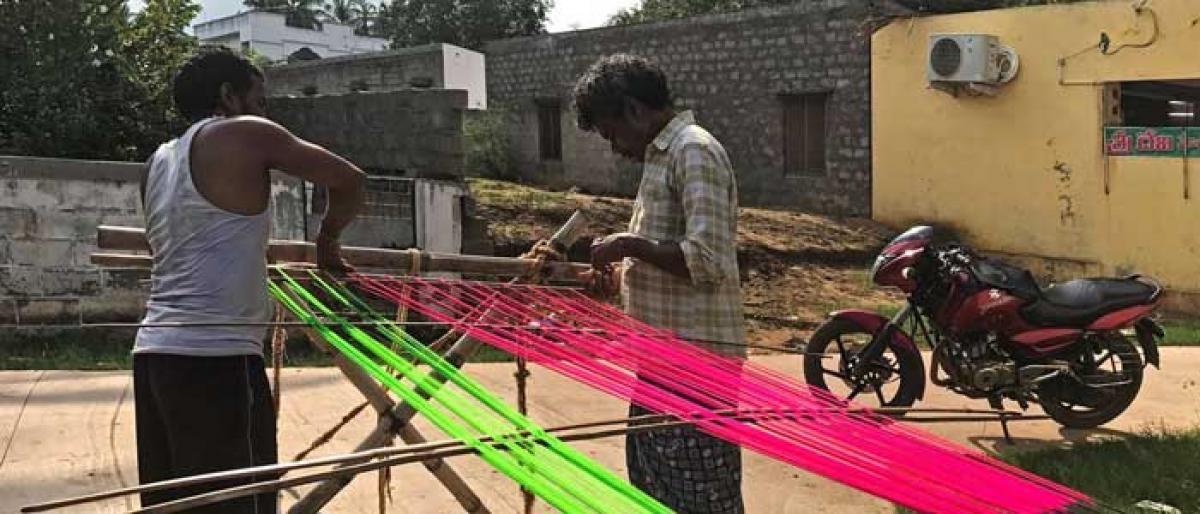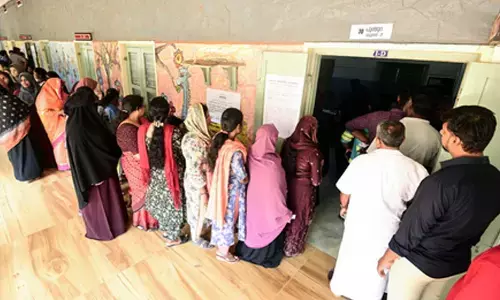Counting threads in Uppada

Every second house in the village of Uppada is a handloom store. Just like Mangalagiri, this goes with the territory. For it too is a handloom village that has brought forth a commercially successful style of saree, the Uppada Pattu Cheera or the Uppada Jamdani Silk as it is more popularly known elsewhere in the country.
Every second house in the village of Uppada is a handloom store. Just like Mangalagiri, this goes with the territory. For it too is a handloom village that has brought forth a commercially successful style of saree, the Uppada Pattu Cheera or the Uppada Jamdani Silk as it is more popularly known elsewhere in the country.
Known for its soft texture and lightness, what defines this saree is the thread count. A hundred threads go in length wise while a hundred and twenty go in sideways. Not a thread more, not one less. For it is this thread count that ensures the quality and feel of this beautiful rich handwoven fabric.
The Uppada Pattu is more often referenced to as Uppada Jamdani, owing to the fact that its origins can be traced back to today’s Bangladesh. This particular style of the handloom saree evolved to its current form when Bangladeshi weavers came and settled in Uppada and the traditional Jamdani technique took on a new essence.
This weave, which is but a localised version of the three hundred year old Jamdani technique, was once the royal garment of the rulers of Andhra Pradesh and weavers were prohibited from weaving these sarees for anyone outside the royal household. Even the late Jayalalitha, erstwhile Chief Minister of Tamil Nadu had once come to Uppada to commission a saree made of threads of pure molten gold, and today there still is a picture of her in the saree at the weaver’s house.
Today this saree sells from anywhere upwards of Rs 6000 to around Rs 3,00,000, not taking into account the custom orders of course. And though it is now the favoured form of the wedding saree, the Uppada weave has had quite a roller coaster ride. From being a simple cotton saree in the 1950s, to fading out in the 80s to achieving the Geographical Indication tag in the 2000s.
While shopping here in Uppada, avoid the bigger stores with the glass fronts and the air-conditioning. It is the smaller houses that house the better quality sarees of superior design and subtler colours. Also it is always a good idea to shop directly from the weavers themselves.
The Uppada Beach which begins five kilometres out of Kakinada, along the way to Uppada, makes for a beautiful drive any time of the day. And the pristine beach, the colourful boats of local fishermen, and its soothing breeze are a constant. Come evening, it begins to get crowded with families coming to the shore from nearby towns. For as the sun begins to set and the sky transforms to a pale pink fringed in a cool blue, it is no longer just about that evening outing that everybody in a humid seaside town craves for.

















